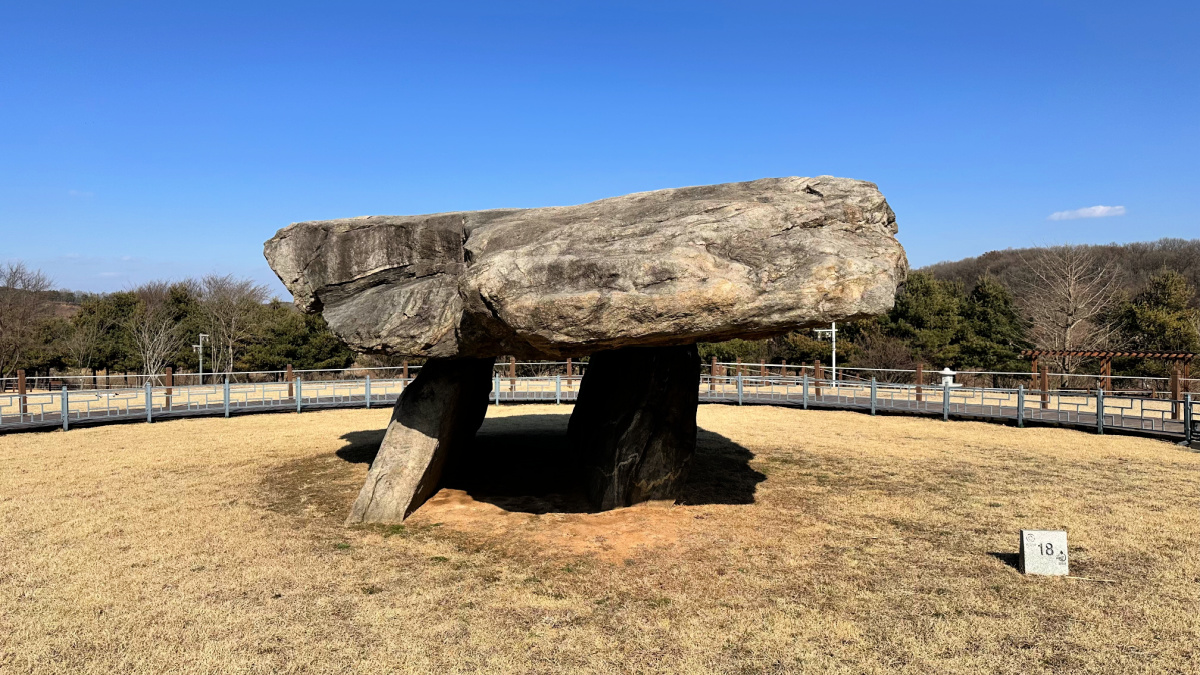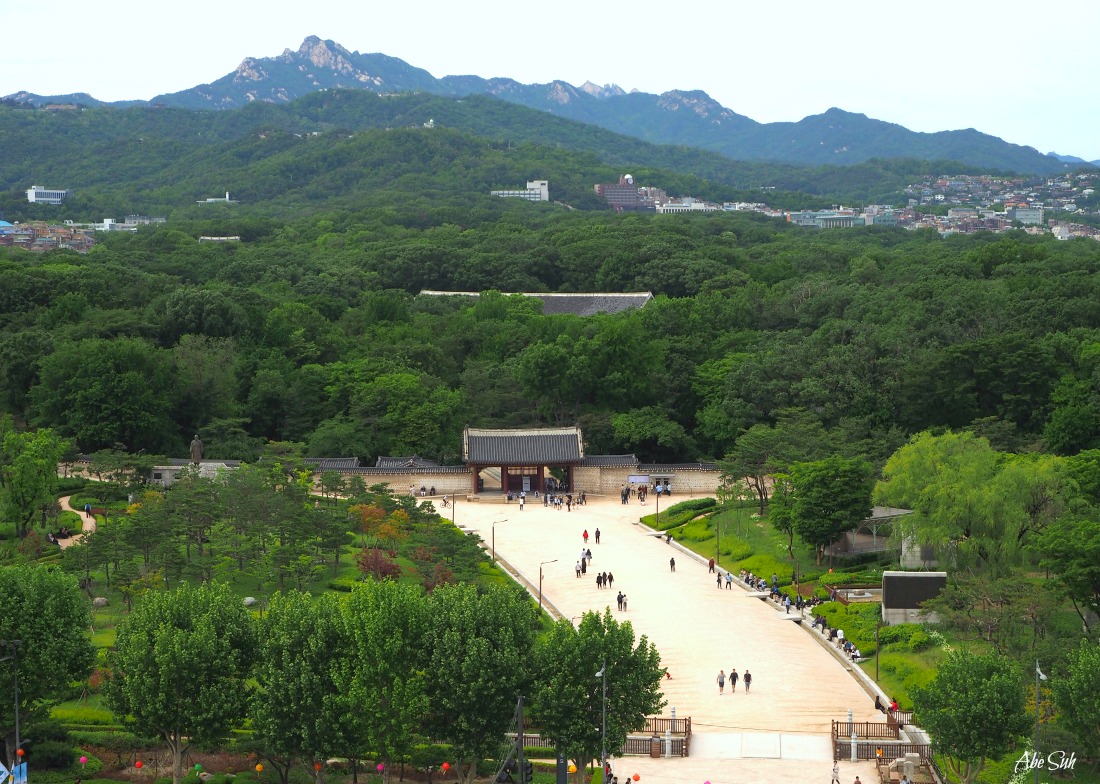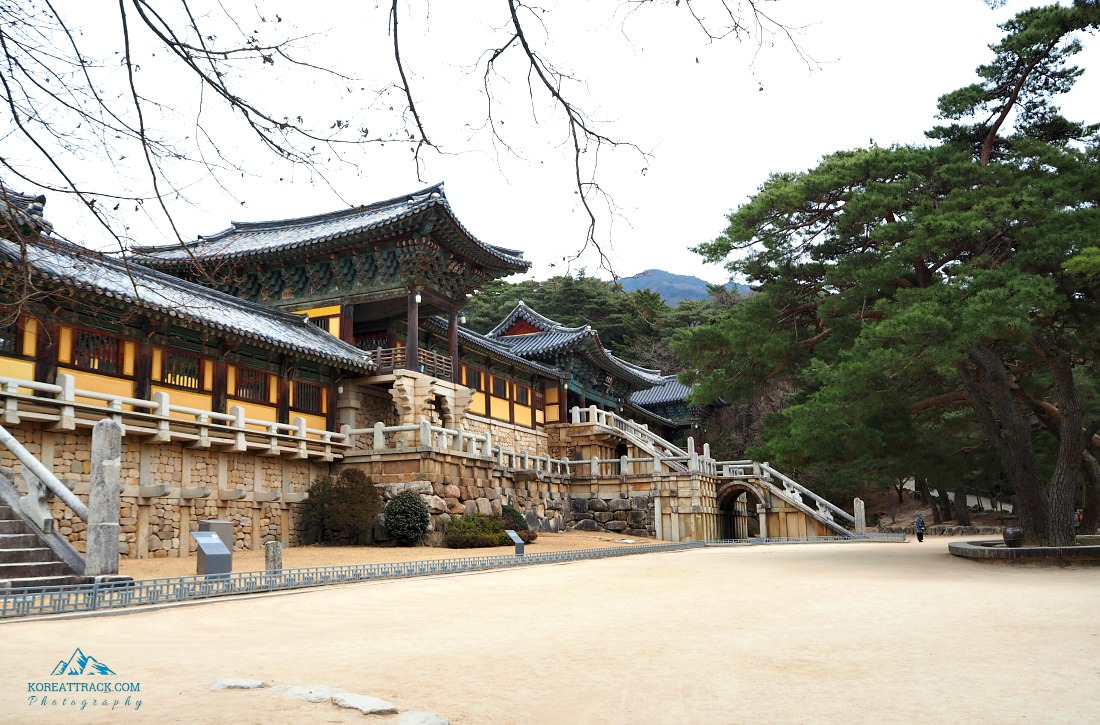Ancient Hahoe and Yangdong Villages of Korea
 Hahoe and Yangdong Villages - Thatched Roofs
Hahoe and Yangdong Villages - Thatched RoofsHahoe and Yangdong Villages
Hahoe and Yangdong Villages, founded in the 14th-15th centuries, are viewed as the two most representative historical family towns in the Republic of Korea.
Their design and location - sheltered by forested mountains and facing out onto a river and open farming fields-- reflect the distinctive aristocratic Confucian culture of the early part of the Joseon Dynasty (1392-1910).
The towns were located to provide both spiritual and physical nourishment from their surrounding landscapes.
 An amazing aerial view of the villages with the verdant mountain in the background
An amazing aerial view of the villages with the verdant mountain in the background The main street amidst the two walls within the Hahoe and Yangdong Villages
The main street amidst the two walls within the Hahoe and Yangdong VillagesThey consist of residences of the head families, together with significant lumber framed houses of other clan members.
Also, you will discover traditional Korean structures, study halls, Confucian academies for learning, and clusters of one story mud-walled, thatched-roofed houses, previously for citizens.
The landscapes, blue mountains, forests, streams, and brooks around the town, framed in views from retreats and structures, were celebrated for their beauty by 18th and 17th-century poets.
Beautiful Setting
 A panorama of Hahoe and Yangdong Villages, South Korea
A panorama of Hahoe and Yangdong Villages, South KoreaHahoe and Yangdong villages are located in the south-eastern part of the Korean peninsula. The area was considered the heartland of the Joseon Dynasty (1392-1910). Joseon ruled the Korean Peninsula for more than five hundred years.
Safeguarded by forested mountains and facing out onto rivers and open farming fields, Hahoe and Yangdong landscape settings are thought to be the two most representative historical villages occupied by particular families.
The two villages were founded in the 14th-15th century and consequently broadened to their present size and structure in the late 18th and 19th centuries.
Their design and siting, reflect the distinct stylish Confucian culture of the early part of the Joseon Dynasty.
The towns were located to supply both spiritual and physical nutrition from their surrounding landscapes.
They consist of the residences of the head families, together with considerable timber-framed homes of other clan members, likewise pavilions, study halls, Confucian academies for learning, and clusters of one floor mud-walled, thatched-roofed houses, previously for commoners.
 The Hahoe and Yangdong Villages sit by the riverside in the area
The Hahoe and Yangdong Villages sit by the riverside in the areaThe spiky blue mountains, trees, and water around the villages, framed in views from retreats and structures, were common themes for their beauty by 18th and 17th-century poets.
Within the two towns, the outstanding ensembles of buildings, their planning, siting and structure customs, are exceptional reflections of the cultural and social systems of the Joseon Dynasty.
This refers to the unique system of clan villages specific to this area, and how they evolved over a period of five centuries.
Selection Criteria For UNESCO
 Traditional thatched roofed houses is in existence for over 500 years
Traditional thatched roofed houses is in existence for over 500 years Front yard and garden area
Front yard and garden areaHahoe and Yangdong are 2 of the very best-preserved and representative examples of clan villages, a kind of settlement characterizing the early part of the Joseon Dynasty.
In their preparation, siting, and building traditions, the two towns are remarkable symbols to the Confucianism of the Joseon dynasty. The Dynasty maintained settlements that followed rigorous Confucian practices over some five hundred years.
Hahoe and Yangdong show the impact of the Joseon Dynasty that profoundly influenced the development of the Korean peninsula over some five centuries.
The towns, and especially the structures of yangban and citizens' houses and their general and individual planning, show the precepts of this Dynasty in terms of its social structures and cultural traditions, in addition to its power and influence and its literary, and philosophical customs.
Maintaining the Village
 Yangbans lived in the Kiwa houses
Yangbans lived in the Kiwa housesThe primary characteristics of the clan village, such as houses of the nobility and commoners, formal spatial design, study halls, and academies, are present within the chosen limits of both communities.
The Byeongsanseowon Confucian Academy is around 4km to the east of Hahoe. In Yangdong town, the Oksanseowon and Donggangseowon Confucian Academies are some 8km and 4km respectively from the town.
The unified landscape setting, including the river, forests, and mountain that influenced authors, is present in Hahoe Village, although partly in the buffer zone.
The property does not experience other than minimal unfavorable impacts of development and has not suffered from disregard.
However,
due to some environmental and facility developments, such as bridges,
roads, and railways, the setting and original environment of Yangdong
Village could have been changed in some respects.
Still, the
Hahoe and Yangdong Villages is worth a visit to learn how Korean people
lived in the past and experience a peaceful and rustic life in the
countryside.
I hope you enjoyed this article. Have fun, and stay safe. Don't forget to like, share, or comment on this article.
- Home
- Korean UNESCO Heritage Sites
- Hahoe and Yangdong Villages
Get Exciting Activities
Book one of our exciting activities today to experience the thrill of a lifetime! Take advantage of this opportunity and secure your spot in advance.
Hotel Map Guide
Find your affordable, accessible, and comfortable hotel in Seoul at Agoda.Com. See the hotel map below...
Hotel Booking Guide
Find affordable and amazing hotels on Agoda.com using the search box below. Book now to enjoy great discounts and save!







New! Comments
What do you think about this page? Leave me a comment in the box below.